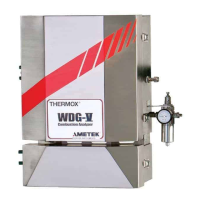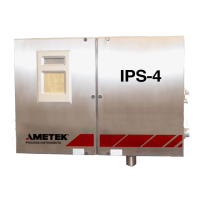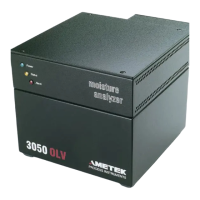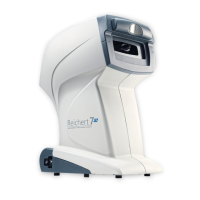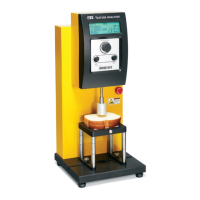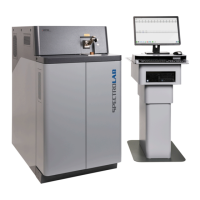2-6 | Thermox WDG-V / VC / VCM with Blow Back
Detectors
Combustibles
The Combustibles Detector is a dual element device. The elements differ
only in that one is coated with a catalyst. The catalyst causes oxidation
to occur at a lower-than-normal temperature. The temperature of the
catalyzed element changes as the combustible mixture burns. The tem-
perature change causes the resistance of the catalyzed element to change.
The resistance change is interpreted by the microprocessor and the corre-
sponding combustibles reading is displayed.
The AMETEK/Thermox catalytic combustibles detector will detect com-
bustible gas present in a sample. The sample must, however, contain
enough oxygen to fully burn the combustible present. The combustibles
detector responds to all unburned combustibles gases. This includes gases
such as CO and H2. You should attempt to match your calibration gas
with a mixture of CO and H
2
that most closely matches the combustibles
mix in your process. We recommend using an even mixture of CO and H
2
as the combustibles component within your span gas.
Examples:
• Flue gas containing 1000 PPM CO, 1000 PPM H
2
and 1% O
2
with an H
2
O, CO
2
and N
2
balance will be sensed to contain 2000 PPM combus-
tibles by the catalytic detector (provided the combustibles calibration
gas consists of equal parts CO and H
2
).
• Flue gas containing 1000 PPM CO, 1000 PPM H
2
and 500 PPM O
2
with
a H
2
O, CO
2
and N
2
balance will be sensed to contain only 1000 PPM
Comb. by the catalytic detector, since there is less than stoichiometric
oxygen present. In this case, the combustibles detector output will be
set to full scale/
• If there is little or no other combustible component in the flue gas, the
combustibles sensor can be calibrated on a mixture of CO and air to
give a CO meaasurement.

